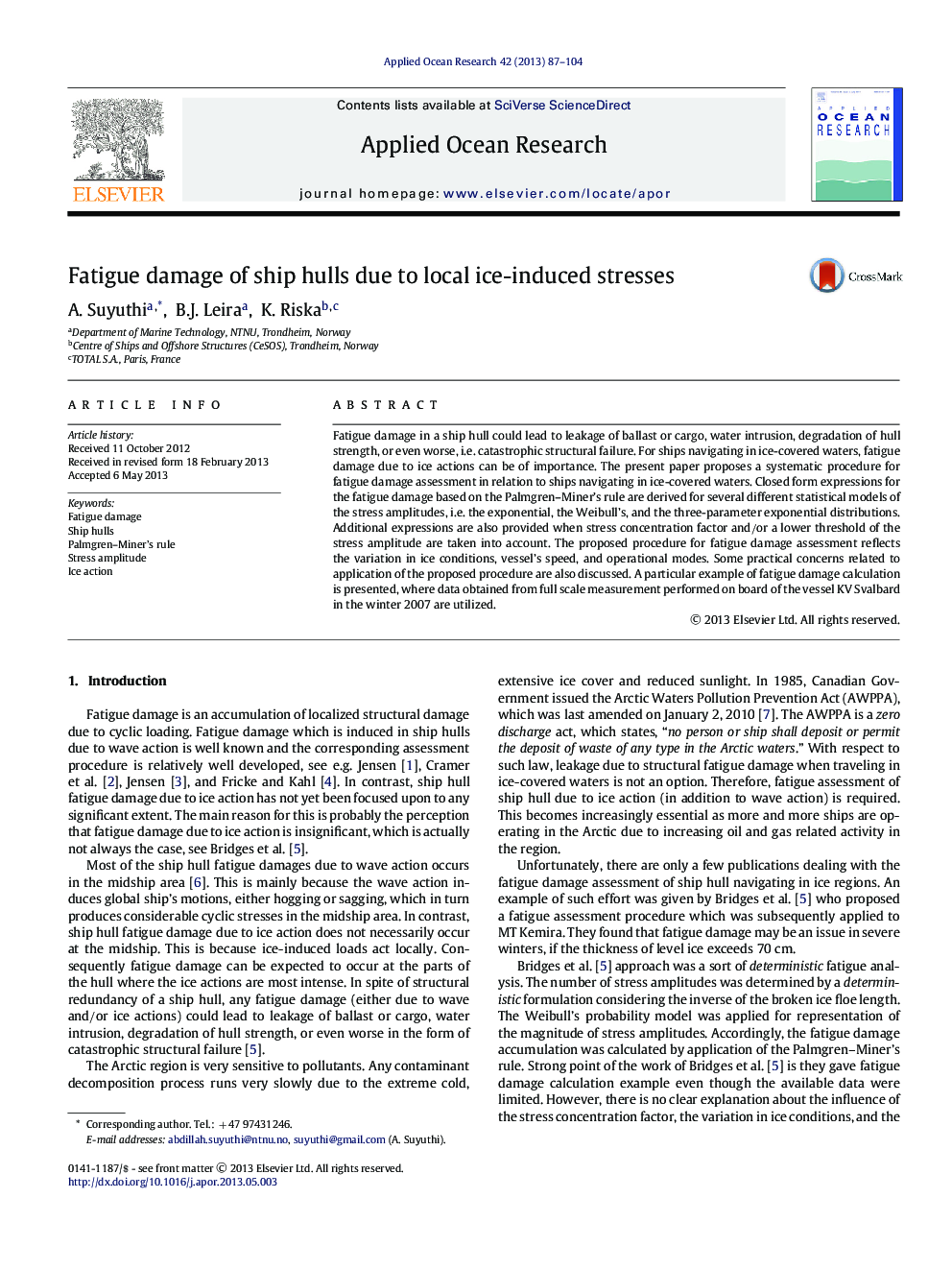| Article ID | Journal | Published Year | Pages | File Type |
|---|---|---|---|---|
| 1720025 | Applied Ocean Research | 2013 | 18 Pages |
•Proposes a systematic procedure for fatigue damage assessment of ship hull navigating in ice-covered waters.•Offers closed form expressions for the fatigue damage accumulation.•Provides additional expressions when SCF and/or a lower threshold of the stress amplitude are taken into account.•The proposed procedure reflects the variation in ice conditions, vessel's speed, and operational modes.•An application example is also provided.
Fatigue damage in a ship hull could lead to leakage of ballast or cargo, water intrusion, degradation of hull strength, or even worse, i.e. catastrophic structural failure. For ships navigating in ice-covered waters, fatigue damage due to ice actions can be of importance. The present paper proposes a systematic procedure for fatigue damage assessment in relation to ships navigating in ice-covered waters. Closed form expressions for the fatigue damage based on the Palmgren–Miner’s rule are derived for several different statistical models of the stress amplitudes, i.e. the exponential, the Weibull’s, and the three-parameter exponential distributions. Additional expressions are also provided when stress concentration factor and/or a lower threshold of the stress amplitude are taken into account. The proposed procedure for fatigue damage assessment reflects the variation in ice conditions, vessel’s speed, and operational modes. Some practical concerns related to application of the proposed procedure are also discussed. A particular example of fatigue damage calculation is presented, where data obtained from full scale measurement performed on board of the vessel KV Svalbard in the winter 2007 are utilized.
